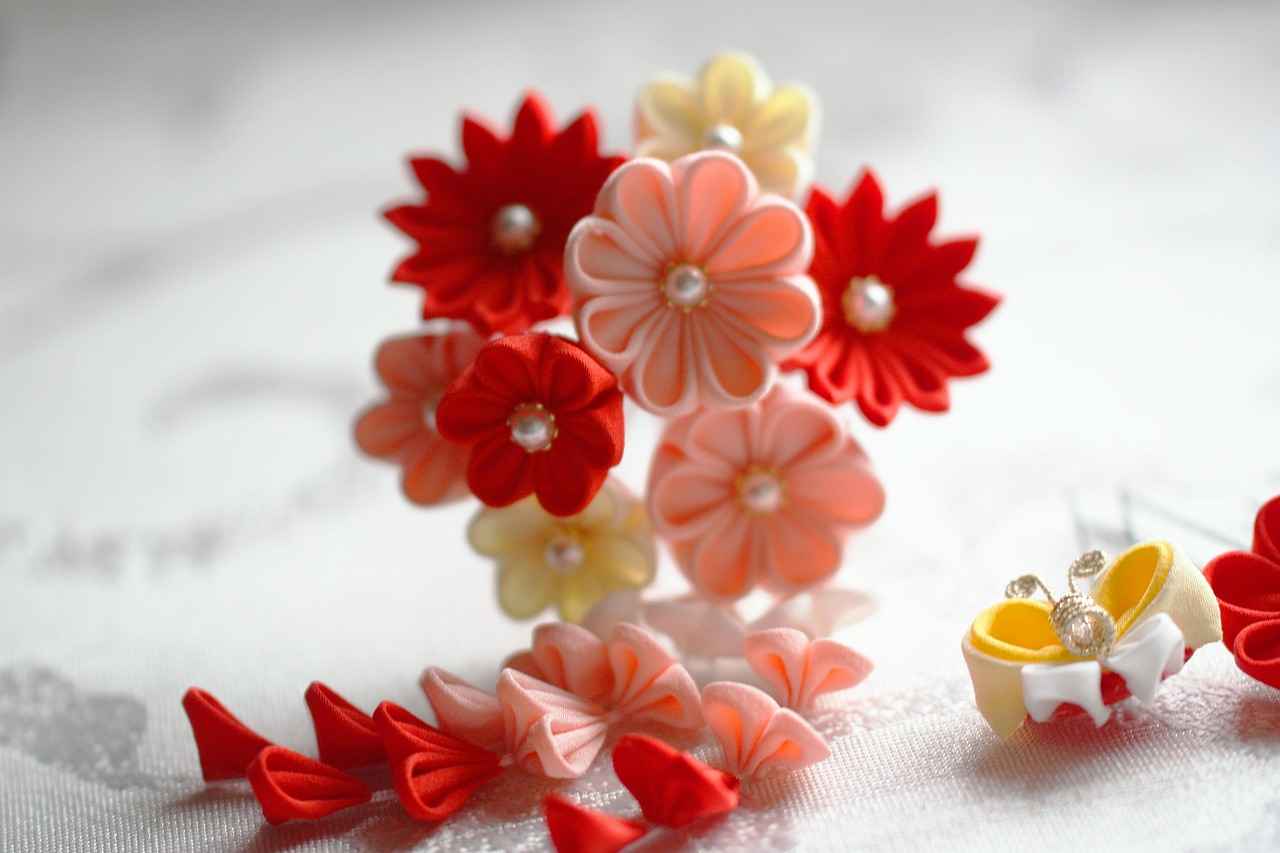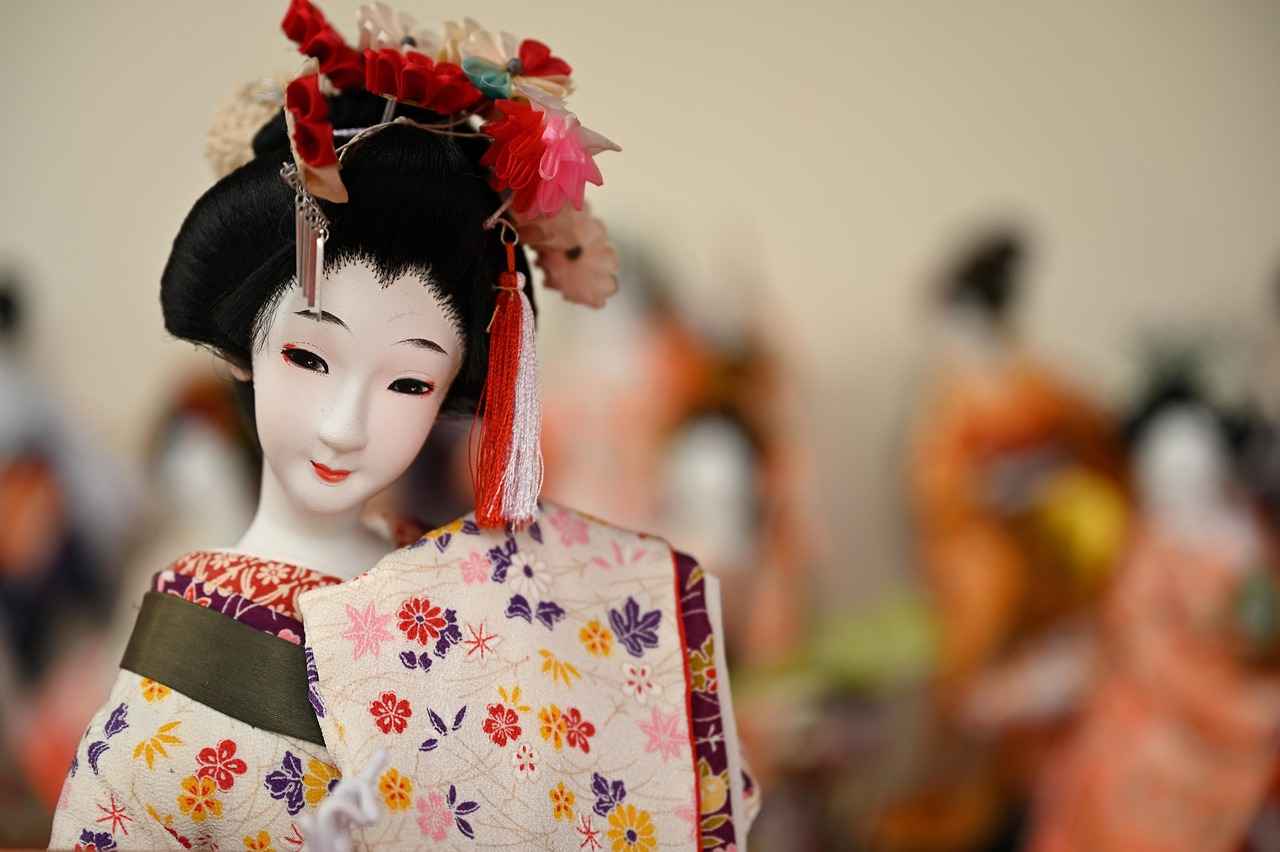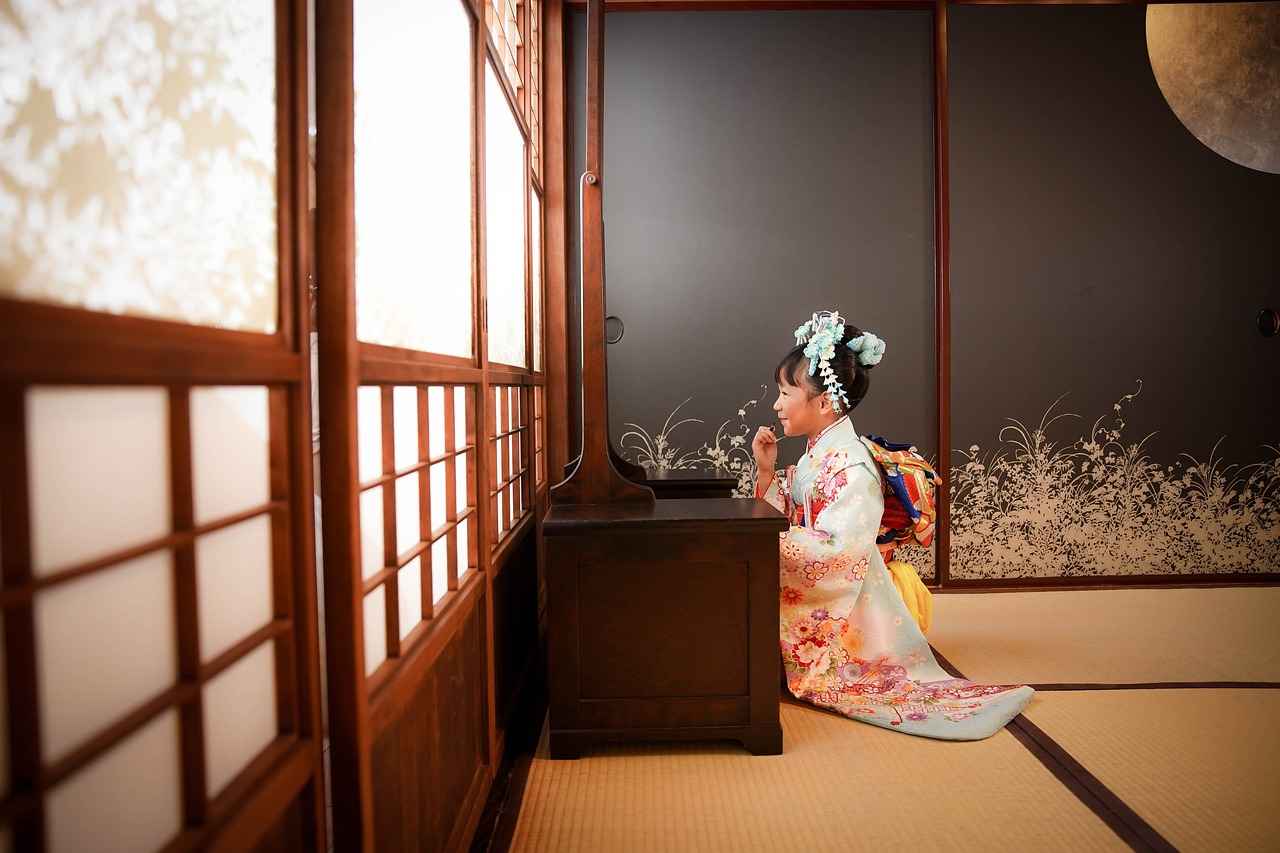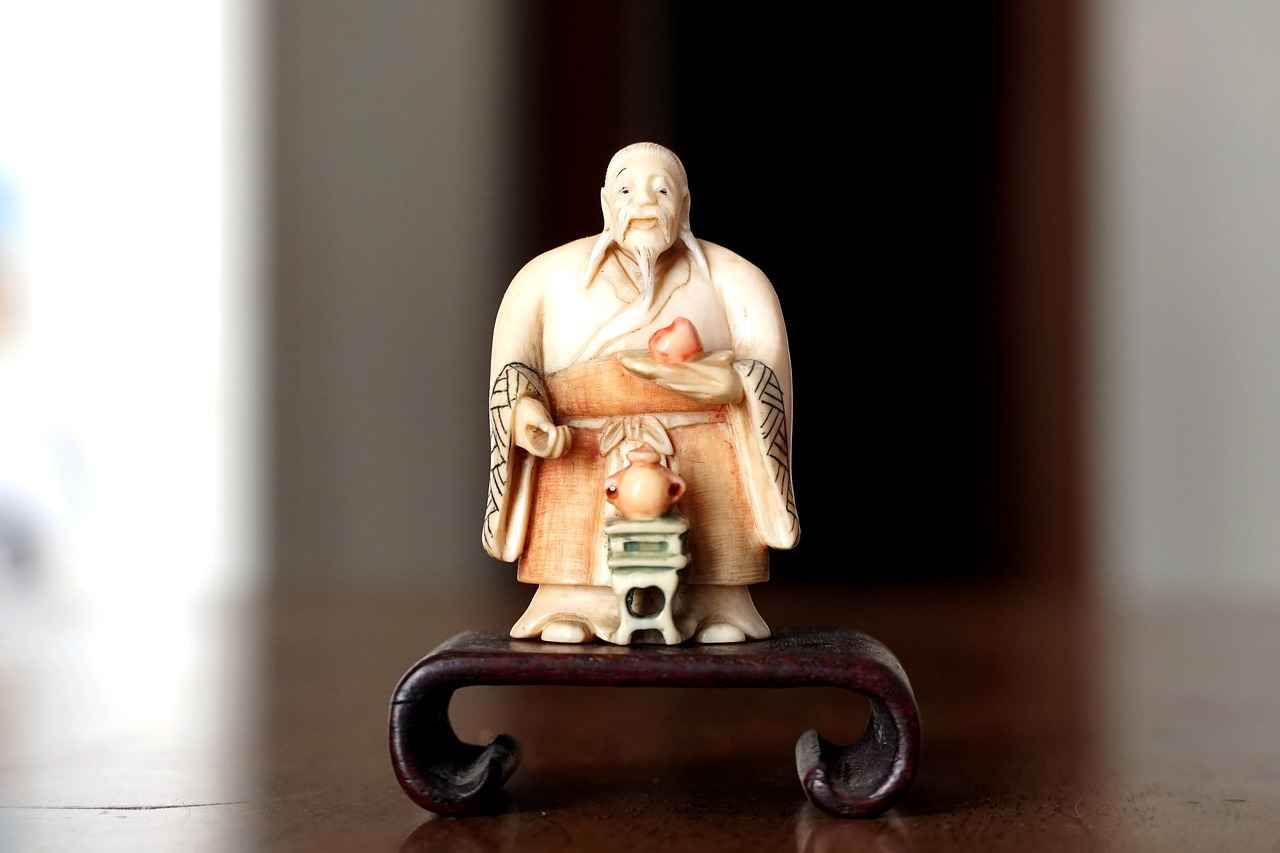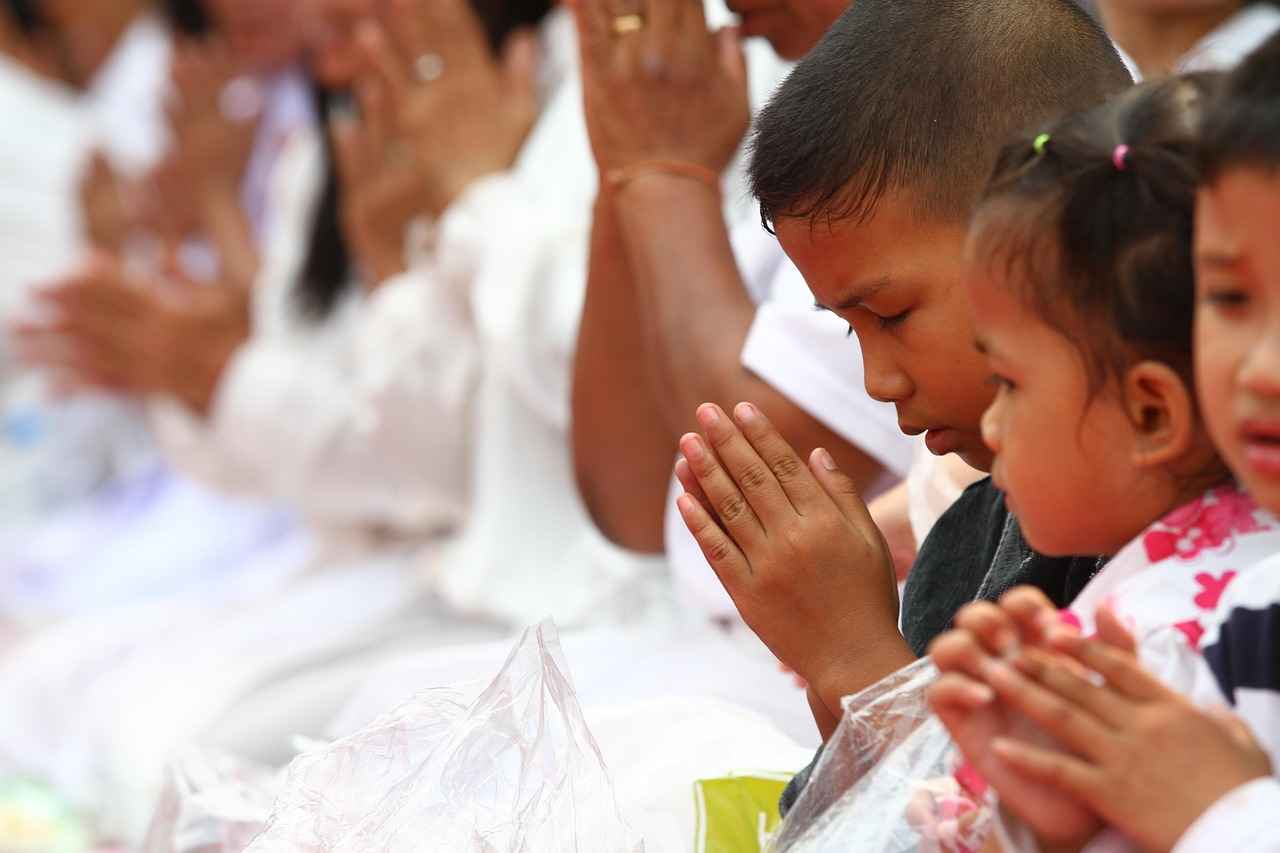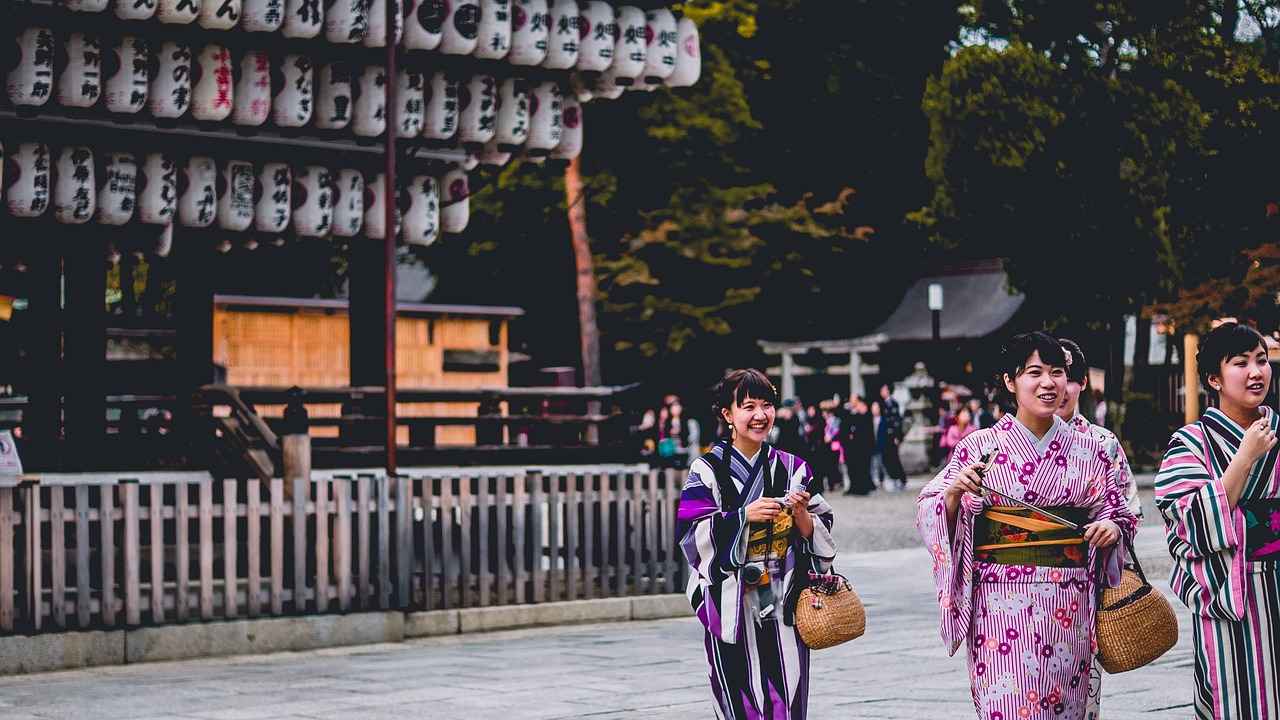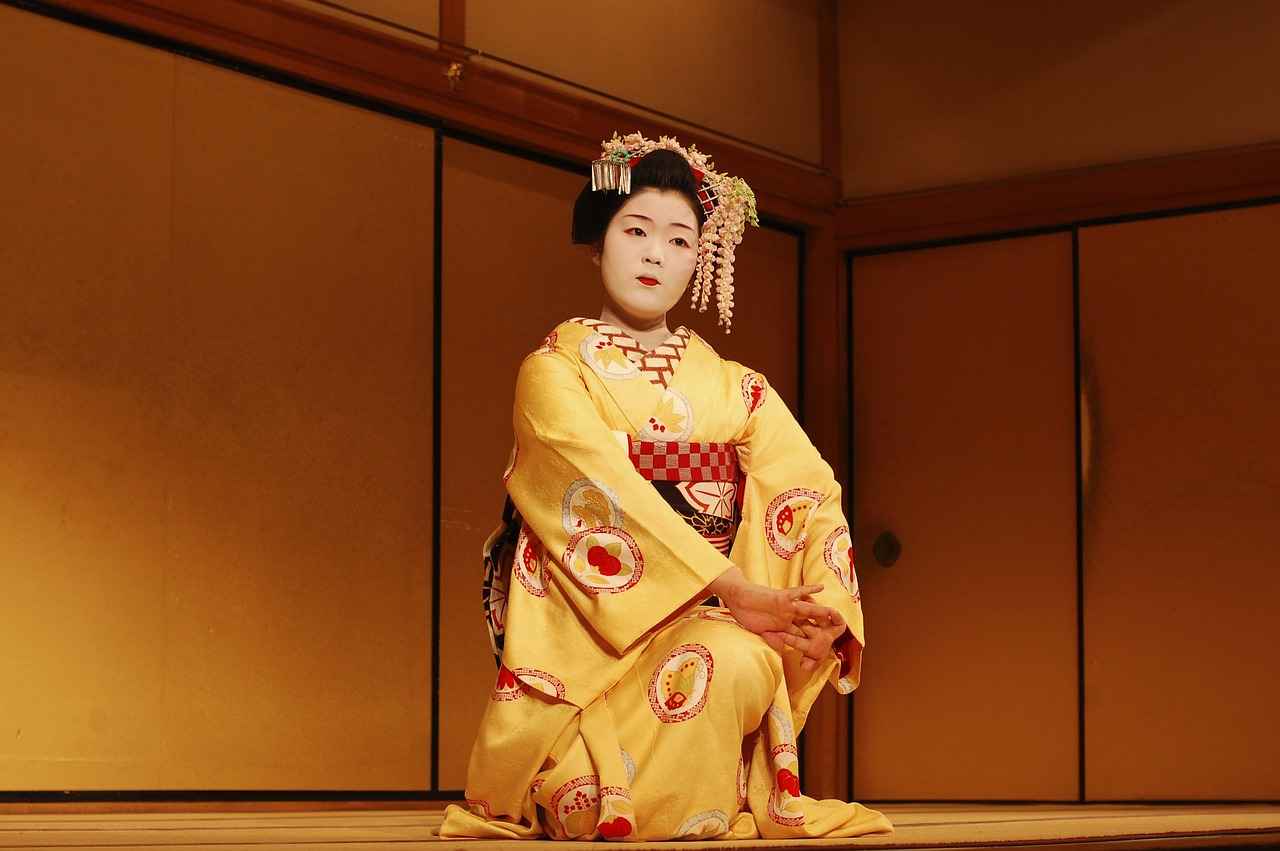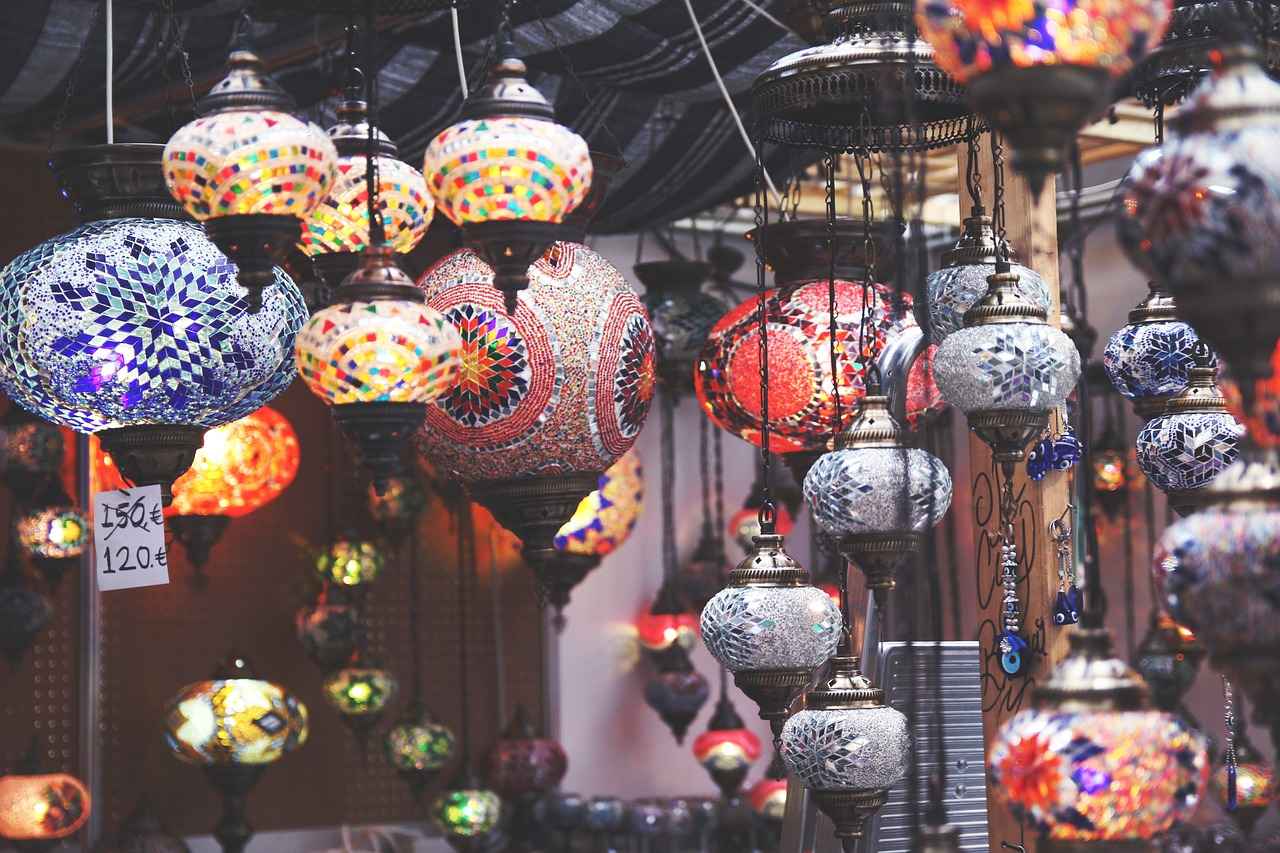This article delves into the rich history, intricate techniques, and cultural significance of kimono design and craftsmanship, revealing how this traditional garment continues to inspire and captivate people worldwide.
The Historical Significance of Kimono
Kimonos have a long-standing history in Japanese culture, serving as a representation of social status, occasions, and regional identity. Understanding their historical context enhances appreciation for their design and craftsmanship.
The Materials Used in Kimono Making
The choice of materials is crucial in kimono design, with silk, cotton, and synthetic fabrics each playing a unique role in the garment’s look and feel.
- Silk: The Traditional Choice – Silk is the most traditional fabric for kimonos, valued for its luster and drape. Its use signifies luxury and is often reserved for special occasions.
- Types of Silk – Different types of silk, such as Habutae and Chirimen, offer various textures and appearances, influencing the overall design and wearability of the kimono.
- Environmental Considerations – Modern kimono makers are increasingly considering sustainability, opting for eco-friendly materials and practices, reflecting a growing awareness of environmental impact.
- Cotton and Synthetic Fabrics – Cotton is often used for casual kimonos, while synthetic fabrics provide durability and affordability, making kimonos more accessible to a broader audience.
The Techniques of Kimono Craftsmanship
Kimono craftsmanship involves various techniques, from weaving to dyeing, each contributing to the garment’s uniqueness and aesthetic appeal.
- Weaving Techniques – Traditional weaving techniques, such as Nishijin-ori, create intricate patterns and textures that are hallmarks of high-quality kimonos, showcasing the skill of the artisans.
- Dyeing Methods – Dyeing methods, including Yuzen and Shibori, allow for vibrant colors and elaborate designs, enhancing the visual storytelling aspect of the kimono.
Kimono Patterns and Their Meanings
The patterns on kimonos often hold deep symbolic meanings, reflecting nature, seasons, and cultural stories, making each piece a work of art.
- Nature-Inspired Designs – Many kimono patterns draw inspiration from nature, such as flowers and landscapes, symbolizing beauty and transience, which are central themes in Japanese aesthetics.
- Seasonal Motifs – Seasonal motifs are popular in kimono design, with specific patterns associated with particular times of the year, celebrating the changing seasons and their significance in Japanese culture.
The Modern Evolution of Kimono Fashion
While traditional kimonos remain cherished, modern interpretations have emerged, blending contemporary fashion with traditional craftsmanship, appealing to new generations.
- Fusion with Western Fashion – The fusion of kimono elements with Western fashion trends has led to innovative styles, allowing for versatility and personal expression in everyday wear.
- Kimono in Pop Culture – Kimonos have made significant appearances in pop culture, influencing fashion designers and becoming a symbol of Japanese heritage on global platforms.
Conclusion: The Enduring Legacy of Kimono Craftsmanship
The art of kimono design and craftsmanship continues to thrive, evolving while preserving its rich heritage, ensuring that this beautiful garment remains relevant and celebrated in modern society.

The Historical Significance of Kimono
Kimonos, the traditional garments of Japan, are not just clothing; they are a profound representation of the country’s rich cultural heritage. These beautiful garments have been integral to Japanese society for centuries, embodying various aspects such as social status, ceremonial occasions, and regional identity. Understanding the historical significance of kimonos allows us to appreciate the intricate designs and the craftsmanship that goes into making each piece.
Historically, the kimono was worn by all classes of society, but the style, fabric, and color often indicated one’s social standing. For instance, during the Edo period, the use of specific colors and patterns was strictly regulated, with the elite often donning elaborate kimonos made from luxurious fabrics like silk. This practice not only showcased wealth but also reinforced social hierarchies.
Moreover, kimonos are closely tied to various cultural rituals and celebrations. For example, during Shichi-Go-San, a traditional rite of passage for children, families dress their young ones in kimonos to celebrate their growth and well-being. Similarly, during weddings, brides often wear exquisite kimonos that symbolize purity and new beginnings.
Regional variations in kimono design also highlight the diversity of Japanese culture. Different areas of Japan have their unique styles, patterns, and techniques, reflecting local traditions and natural elements. For example, the Nishijin style from Kyoto is renowned for its intricate weaving techniques, while the Oshima style from Kagoshima is celebrated for its rich, natural dyes.
In conclusion, the historical significance of kimonos extends beyond mere fashion; they are living artifacts that tell the story of Japan’s social fabric, cultural practices, and regional diversity. By understanding their historical context, we can gain a deeper appreciation for the artistry and craftsmanship that define these iconic garments.
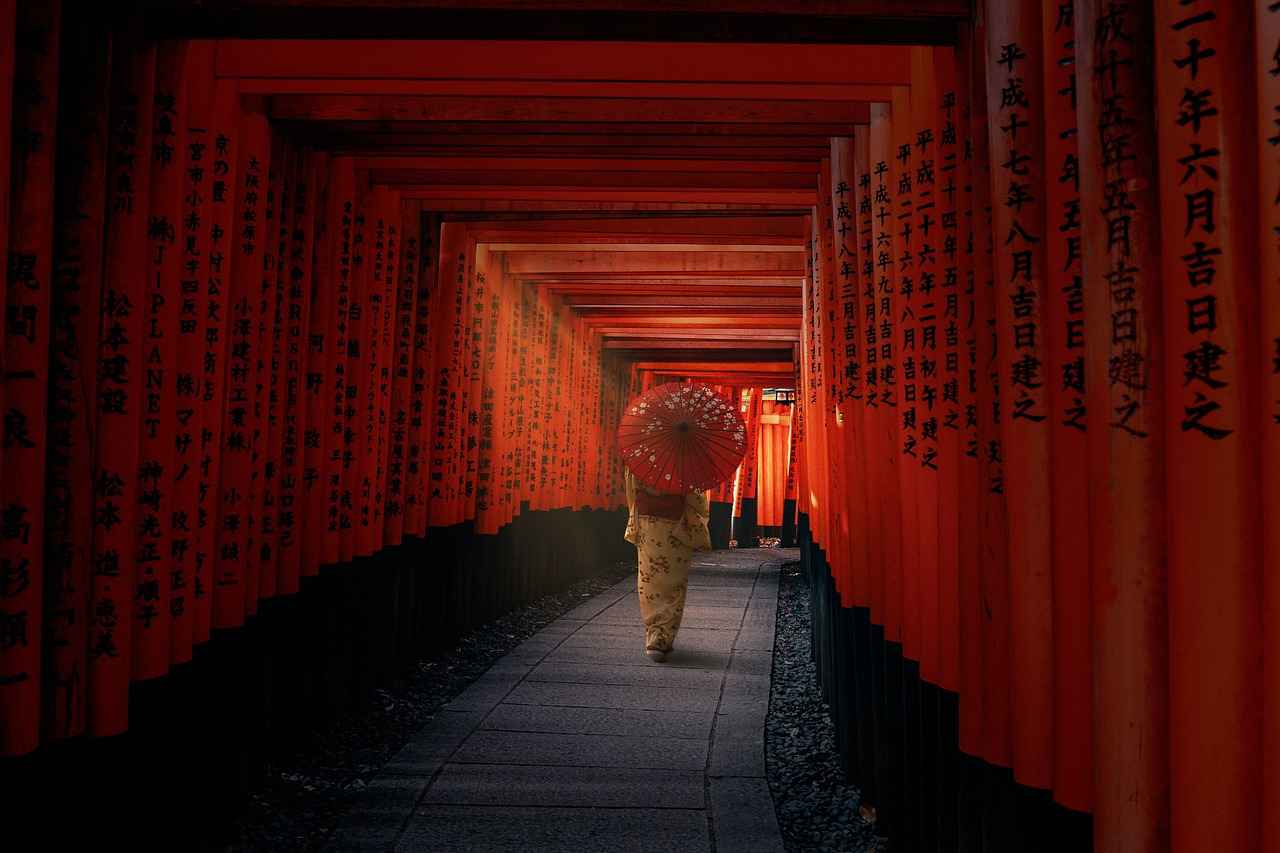
The Materials Used in Kimono Making
The choice of materials in kimono making is not just a matter of aesthetics; it is a reflection of cultural values, tradition, and craftsmanship. Each fabric used in kimonos contributes uniquely to the garment’s overall appearance and feel, influencing how it is perceived and worn.
- Silk: Regarded as the most luxurious and traditional fabric, silk is prized for its luster and soft drape. It is often used for formal occasions, symbolizing status and elegance. Within the category of silk, various types such as Habutae and Chirimen provide different textures, enhancing the visual appeal of the kimono.
- Cotton: Typically used for more casual kimonos, cotton is valued for its breathability and comfort. It is an ideal choice for everyday wear, allowing for ease of movement while still maintaining a connection to traditional aesthetics.
- Synthetic Fabrics: As the demand for accessible and affordable kimonos grows, synthetic fabrics have become increasingly popular. These materials offer durability and ease of care, making them a practical choice for those looking to enjoy the beauty of kimonos without the high maintenance associated with silk.
In addition to the primary fabric choices, modern kimono makers are also embracing sustainable practices. The incorporation of eco-friendly materials is becoming a priority, reflecting a growing awareness of environmental impact within the fashion industry. This shift not only honors traditional craftsmanship but also paves the way for a more sustainable future.
Ultimately, the materials selected for kimono making are integral to the garment’s identity. They tell a story of heritage, innovation, and a deep respect for the artistry involved in this timeless craft.
Silk: The Traditional Choice
Silk has long been regarded as the most traditional and esteemed fabric used in the creation of kimonos. Its unique qualities, such as a remarkable luster and graceful drape, make it an ideal choice for this iconic garment. The use of silk not only symbolizes luxury but also signifies the importance of the occasion for which the kimono is worn.
Historically, silk has been synonymous with Japanese culture, often reserved for formal events like weddings, tea ceremonies, and festivals. The fabric’s ability to reflect light beautifully enhances the overall aesthetic of the kimono, making it a preferred choice among artisans and wearers alike. In addition, the soft texture of silk provides comfort while maintaining an elegant silhouette, which is crucial for the traditional kimono’s design.
There are various types of silk utilized in kimono making, each offering distinct characteristics. For instance, Habutae silk is known for its smoothness and lightweight feel, making it suitable for summer kimonos. On the other hand, Chirimen silk has a unique crepe texture that adds depth and richness to the garment. These diverse silk types allow designers to create kimonos that cater to different seasons and occasions.
As the fashion industry evolves, modern kimono makers are increasingly incorporating sustainability into their practices. This includes sourcing silk from eco-friendly producers and employing techniques that reduce waste. Such efforts not only preserve the traditional craftsmanship but also align with contemporary values regarding environmental responsibility.
In conclusion, silk remains the quintessential fabric for kimonos, embodying both tradition and innovation. Its luxurious qualities and cultural significance ensure that it will continue to be cherished for generations to come.
Types of Silk
play a crucial role in the art of kimono making, providing distinct textures and appearances that greatly influence the overall design and wearability of these traditional garments. Among the various types of silk, Habutae and Chirimen stand out for their unique characteristics.
Habutae Silk is known for its smooth and soft texture, making it a popular choice for formal kimonos. This type of silk has a subtle sheen that enhances the garment’s elegance. Often used in wedding kimonos and ceremonial attire, Habutae silk drapes beautifully, allowing for a flattering fit that complements the wearer’s silhouette. Its lightweight nature also ensures comfort, making it suitable for extended wear during important events.
On the other hand, Chirimen Silk is distinguished by its slightly crinkled texture, which adds depth and dimension to the fabric. This type of silk is often chosen for casual kimonos, as its unique surface enhances the overall aesthetic appeal. Chirimen silk is not only visually captivating but also provides excellent durability, making it a practical option for everyday use. The texture of Chirimen silk allows for vibrant dyeing techniques, resulting in stunning patterns that reflect seasonal motifs or nature-inspired designs.
| Type of Silk | Texture | Common Uses |
|---|---|---|
| Habutae | Smooth and soft | Formal kimonos, wedding attire |
| Chirimen | Crinkled | Casual kimonos, everyday wear |
In conclusion, the choice between Habutae and Chirimen silk can significantly influence the design and wearability of a kimono. Each type of silk offers its own unique benefits, allowing for a wide range of styles that cater to different occasions and personal preferences. Understanding these differences not only enhances the appreciation of kimono craftsmanship but also allows wearers to select the perfect fabric for their needs.
Environmental Considerations
In recent years, the world has witnessed a significant shift towards sustainability across various industries, and the art of kimono making is no exception. Modern kimono artisans are increasingly embracing eco-friendly practices and materials, reflecting a broader cultural awareness regarding environmental impact.
One of the most notable changes in kimono production is the use of sustainable materials. Many designers are opting for organic cotton, bamboo, and recycled fabrics, which not only reduce environmental footprints but also provide unique textures and aesthetics. These materials are often sourced from local suppliers, promoting a more sustainable supply chain and supporting local economies.
Furthermore, the dyeing processes used in traditional kimono making are evolving. Many artisans are now utilizing natural dyes derived from plants, minerals, and other organic sources. This shift minimizes harmful chemical usage, which can be detrimental to both the environment and the artisans’ health. Techniques such as indigo dyeing have gained popularity, as they offer vibrant colors while being less harmful to the ecosystem.
Additionally, modern kimono makers are rethinking their production methods. By adopting zero-waste principles, artisans are finding innovative ways to utilize every scrap of fabric, reducing the amount of waste generated during the manufacturing process. This approach not only conserves resources but also encourages creativity in design.
As a result of these changes, the kimono industry is not only preserving its rich heritage but also adapting to contemporary environmental challenges. Consumers are becoming more conscious of their purchasing decisions, often favoring brands that prioritize sustainability. This shift is prompting many traditional kimono makers to re-evaluate their practices, ensuring that the beautiful art of kimono crafting continues to thrive in an environmentally responsible manner.
In conclusion, the integration of sustainability into kimono making is a testament to the industry’s resilience and adaptability. By prioritizing eco-friendly materials and practices, modern artisans are ensuring that this cherished cultural garment remains relevant and responsible in today’s world.
Cotton and Synthetic Fabrics
play a significant role in the world of kimono design, offering unique benefits that cater to diverse preferences and budgets. While traditional kimonos are often crafted from luxurious silk, the shift towards more casual and accessible options has led to the increasing popularity of cotton and synthetic materials.
Cotton is frequently chosen for casual kimonos due to its softness and breathability. This natural fabric is ideal for warmer seasons and everyday wear, allowing for comfort without sacrificing style. Cotton kimonos often feature vibrant prints and patterns, making them a favorite among younger generations who wish to embrace traditional Japanese aesthetics in a more relaxed setting.
On the other hand, synthetic fabrics, such as polyester and nylon, have revolutionized the kimono market by providing a more affordable and durable alternative. These materials are resistant to wrinkles and fading, making them perfect for frequent use. Additionally, synthetic kimonos are easier to care for, appealing to those who lead busy lifestyles but still want to enjoy the elegance of this traditional garment.
Moreover, the use of synthetic fabrics has made kimonos accessible to a broader audience, transcending cultural barriers. As fashion continues to evolve, many designers are incorporating both cotton and synthetic materials into their collections, blending traditional craftsmanship with modern sensibilities.
In summary, the choice between cotton and synthetic fabrics in kimono design not only reflects personal style but also highlights the evolving nature of this timeless garment. Whether one opts for the classic appeal of cotton or the practicality of synthetic materials, the kimono remains a cherished symbol of Japanese culture.

The Techniques of Kimono Craftsmanship
Kimono craftsmanship is an intricate art that showcases a variety of techniques, each contributing to the garment’s unique charm and cultural significance. The process begins with the selection of materials and extends through various methods of production, making each kimono a reflection of the artisan’s skill and creativity.
Weaving Techniques
One of the most celebrated aspects of kimono craftsmanship is the weaving process. Traditional methods, such as Nishijin-ori, are renowned for their complexity and beauty. This technique involves a meticulous process of weaving threads of silk into elaborate patterns, resulting in stunning textures that elevate the aesthetic of the kimono. Artisans often spend years mastering these techniques, ensuring that each piece is not only a garment but a work of art.
Dyeing Methods
Dyeing is another critical component of kimono craftsmanship. Techniques like Yuzen and Shibori allow artisans to create vibrant colors and intricate designs. Yuzen, for example, utilizes a resist-dyeing method that enables the creation of detailed patterns, often depicting elements from nature. Shibori, on the other hand, involves various binding and folding techniques to create unique textures and shapes in the fabric. These dyeing methods not only enhance the visual appeal of the kimono but also tell stories through their designs.
Emphasis on Detail
Every kimono is a testament to the artisan’s attention to detail. From the choice of colors to the precision of the patterns, each element is carefully considered. This dedication to craftsmanship ensures that every kimono is unique, often reflecting the personal style of the wearer or the cultural significance of the occasion.
Conclusion
In conclusion, the techniques involved in kimono craftsmanship are as diverse as they are intricate. From the weaving of silk to the art of dyeing, each step in the process contributes to the creation of a garment that is not only beautiful but also steeped in cultural heritage. The enduring legacy of these techniques continues to inspire new generations of artisans and fashion enthusiasts alike.
Weaving Techniques
The Fascinating Art of Kimono Design and Craftsmanship
This article explores the rich history, intricate techniques, and cultural significance of kimono design and craftsmanship, revealing how this traditional garment continues to inspire and captivate people worldwide.
Among the various methods used in kimono craftsmanship, traditional weaving techniques stand out for their complexity and artistry. One of the most renowned techniques is Nishijin-ori, which originates from the Nishijin district in Kyoto. This method has been practiced for centuries and is characterized by its ability to create intricate patterns and textures that are hallmarks of high-quality kimonos.
What is Nishijin-ori?
Nishijin-ori involves a meticulous process where threads of silk are woven together to form elaborate designs. Artisans use a variety of colors and patterns to tell stories and convey cultural meanings. The craftsmanship is not only a testament to the skill of the artisans but also reflects the rich cultural heritage of Japan.
Techniques and Tools
- Hand Weaving: Many Nishijin-ori pieces are crafted by hand, allowing for unique variations in each garment.
- Pattern Weaving: This technique involves creating patterns directly into the fabric during the weaving process, resulting in stunning visual effects.
- Use of Gold and Silver Threads: Some kimonos incorporate metallic threads, adding a luxurious touch and enhancing the overall aesthetic.
The Significance of Weaving in Kimono Craftsmanship
The skill involved in these traditional weaving techniques is not just about creating beautiful textiles; it is also about preserving a cultural legacy. Each piece of woven fabric can take months to complete, highlighting the dedication and artistry of the craftsmen involved. As modern fashion evolves, the essence of these traditional techniques continues to influence contemporary designs, ensuring that the beauty of kimono craftsmanship remains a vital part of Japanese culture.
In conclusion, the intricate weaving techniques such as Nishijin-ori play a crucial role in defining the quality and artistry of kimonos. They represent a blend of tradition, skill, and cultural expression that captivates not only those who wear them but also those who appreciate the rich history behind this iconic garment.
Dyeing Methods
play a crucial role in the creation of kimonos, transforming plain fabrics into vibrant canvases of art. Among the most celebrated techniques are Yuzen and Shibori, each offering unique characteristics that enhance the visual storytelling aspect of the kimono.
Yuzen is a meticulous dyeing technique that originated in the Edo period, known for its intricate designs and vivid colors. Artisans hand-paint the fabric using a resist paste, allowing for detailed patterns that can depict everything from nature to abstract motifs. This method not only showcases the skill of the artist but also allows for a personal touch, as each piece can be uniquely tailored to reflect individual stories or themes.
On the other hand, Shibori involves a variety of binding, folding, and stitching techniques that create stunning patterns through a process of resist dyeing. This ancient technique results in beautiful, organic designs that often evoke a sense of nature and spontaneity. The unpredictability of the dyeing process means that no two Shibori kimonos are ever alike, making each garment a one-of-a-kind masterpiece.
| Dyeing Method | Characteristics | Visual Impact |
|---|---|---|
| Yuzen | Hand-painted, intricate designs | Vibrant and detailed storytelling |
| Shibori | Resist dyeing with folds and stitches | Unique, organic patterns |
The integration of these dyeing methods not only enhances the aesthetic appeal of kimonos but also deepens their cultural significance. Each color and pattern can symbolize various themes, such as seasonal changes or natural elements, allowing wearers to convey messages and emotions through their attire.
As kimono craftsmanship evolves, these traditional dyeing techniques remain vital, preserving the rich heritage of Japanese textile arts while inspiring new generations of designers and artists. The artistry involved in Yuzen and Shibori not only enriches the visual landscape of kimonos but also serves as a reminder of the deep cultural narratives woven into each thread.
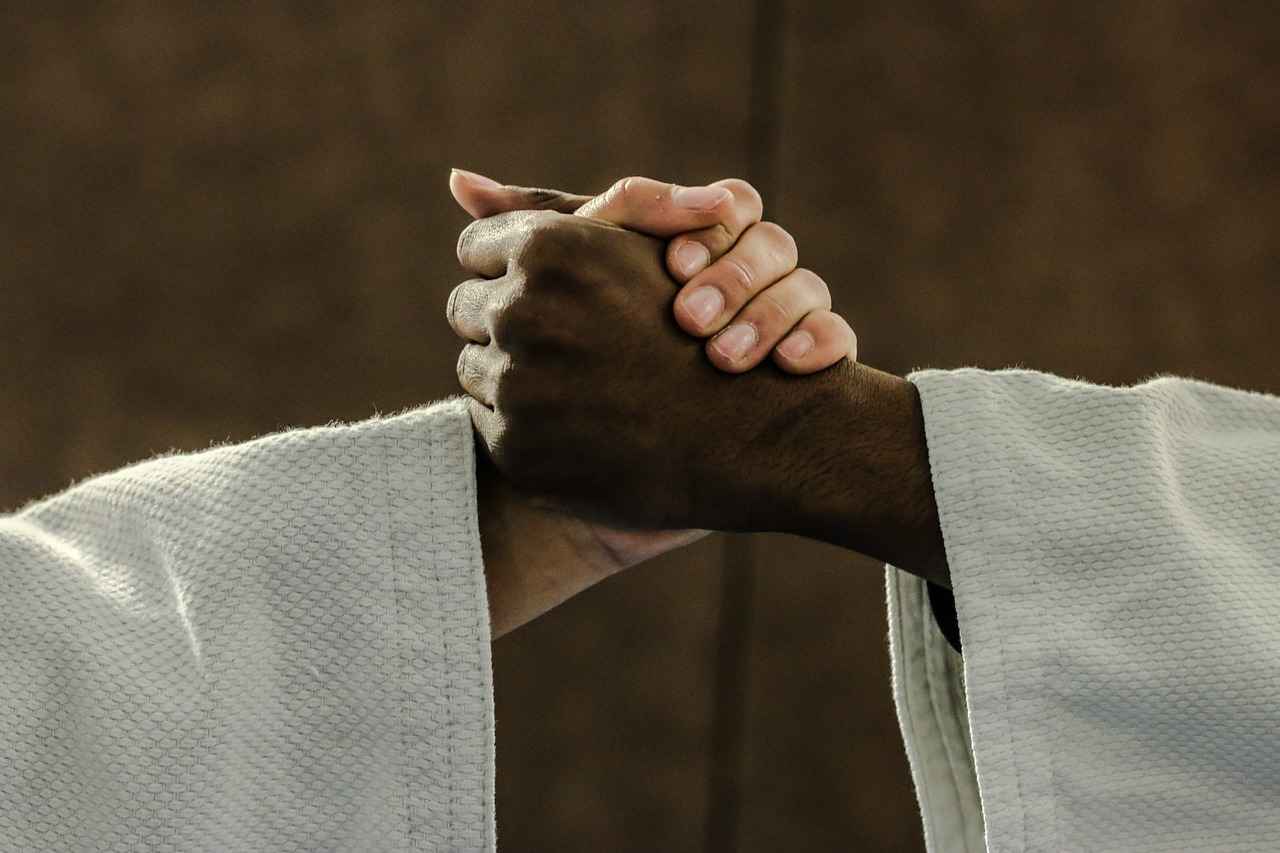
Kimono Patterns and Their Meanings
The art of kimono design is not merely about fabric and color; it is a profound expression of cultural heritage and symbolism. Each pattern woven or dyed into a kimono tells a story, reflecting the natural world, seasonal changes, and the rich tapestry of Japanese culture.
| Pattern Type | Symbolic Meaning |
|---|---|
| Cherry Blossoms (Sakura) | Transience and beauty of life |
| Waves (Seigaiha) | Peace and good fortune |
| Crane (Tsuru) | Longevity and happiness |
| Pine Trees (Matsu) | Strength and resilience |
Many kimono patterns draw inspiration from nature, often depicting elements like flowers, birds, and landscapes. These designs are not just decorative; they embody the Japanese philosophy of wabi-sabi, which finds beauty in imperfection and the fleeting nature of life. For instance, the cherry blossom symbolizes the transient beauty of life, reminding the wearer to cherish each moment.
Seasonal motifs also play a significant role in kimono design. Specific patterns are associated with different times of the year, celebrating the changing seasons and their significance in Japanese culture. For example, autumn kimonos may feature vibrant hues of red and orange, symbolizing the harvest and the beauty of fall foliage.
In conclusion, the patterns on kimonos are deeply embedded with meaning, serving as a canvas for storytelling and cultural expression. Each piece is not just a garment but a work of art that connects the wearer to their heritage and the world around them.
Nature-Inspired Designs
in kimono patterns are not just decorative; they embody a profound connection to the natural world that is central to Japanese culture. These designs reflect the beauty and transience of nature, capturing the essence of fleeting moments and the changing seasons. This article delves into the significance of nature-inspired motifs in kimono design, exploring their aesthetic appeal and cultural relevance.
Throughout history, kimonos have featured a variety of natural elements, including flowers, trees, and landscapes. Each pattern tells a story, often symbolizing deeper meanings associated with life, death, and rebirth. For instance, the cherry blossom (sakura) is a popular motif, representing the beauty of life and the inevitability of change, as these blossoms bloom briefly before falling. Similarly, the crane symbolizes longevity and good fortune, making it a cherished design in many kimonos.
| Motif | Symbolism |
|---|---|
| Cherry Blossom | Beauty and transience |
| Crane | Longevity and good fortune |
| Pine Tree | Strength and resilience |
Seasonal motifs also play a crucial role in kimono design. For example, patterns featuring maple leaves are commonly worn in autumn, celebrating the vibrant colors of the season. This connection to nature not only enhances the aesthetic appeal of the kimono but also fosters a deep appreciation for the changing environment.
Moreover, the incorporation of natural dyes in kimono production further emphasizes this theme. Traditional dyeing techniques, such as indigo dyeing and vegetable dyeing, utilize materials sourced from nature, resulting in unique colors that reflect the beauty of the world around us.
In conclusion, nature-inspired designs in kimonos are more than just visual elements; they are a celebration of life’s beauty and impermanence. By embracing these motifs, kimono makers honor the intricate relationship between human culture and the natural environment, ensuring that each garment is a timeless piece of art.
Seasonal Motifs
play a vital role in the art of kimono design, encapsulating the beauty and essence of Japan’s changing seasons. Each season brings its own unique palette and symbolism, deeply rooted in the cultural and natural landscape of Japan. This article delves into the significance of these motifs, exploring how they reflect the rhythms of nature and the cultural values associated with each time of year.
The spring season, for instance, is often represented by delicate cherry blossoms (sakura), symbolizing renewal and the fleeting nature of life. Kimonos adorned with these patterns are typically worn during Hanami celebrations, where people gather to appreciate the beauty of blooming cherry trees.
As summer approaches, vibrant motifs such as lotus flowers and waves become prevalent. These designs not only celebrate the warmth and beauty of summer but also evoke feelings of tranquility and refreshment, reflecting the importance of water in Japanese culture.
Autumn brings a rich tapestry of colors, with patterns featuring maple leaves and chrysanthemums, symbolizing change and the beauty of impermanence. Kimonos with these motifs are often worn during seasonal festivals, emphasizing the celebration of harvest and gratitude.
Finally, winter motifs often depict snowflakes and plum blossoms, representing resilience and hope. These designs capture the serene beauty of winter landscapes, reminding wearers of the quiet strength that comes with the season.
In conclusion, seasonal motifs in kimono design are much more than mere decorations; they are a profound expression of Japan’s cultural identity and a celebration of nature’s beauty. Each pattern tells a story, connecting the wearer to the rich traditions and seasonal changes that shape Japanese life.

The Modern Evolution of Kimono Fashion
In recent years, the kimono has undergone a remarkable transformation, merging its traditional roots with contemporary fashion trends. While the classic kimono remains a symbol of Japanese heritage, modern interpretations have emerged, appealing to younger generations and fashion enthusiasts worldwide.
Blending Tradition with Modernity
Today’s designers are reimagining the kimono, incorporating innovative cuts, vibrant colors, and unique fabrics. This fusion not only preserves the artistry of traditional kimono making but also makes it relevant in today’s fast-paced fashion landscape. The result is a garment that is both timeless and fashion-forward.
Kimono-Inspired Streetwear
One of the most significant trends is the integration of kimono elements into streetwear. Designers are creating kimono jackets and robes that can be paired with casual outfits, allowing for a versatile wardrobe. This blend of styles encourages personal expression and makes the kimono accessible to a broader audience.
Eco-Friendly Practices
As sustainability becomes increasingly important in fashion, many modern kimono makers are embracing eco-friendly materials and practices. This shift not only reflects a growing awareness of environmental issues but also appeals to consumers who prioritize ethical fashion choices.
Kimono in Global Fashion
The influence of the kimono has extended beyond Japan, becoming a staple in global fashion. From high-end runway shows to everyday wear, the kimono’s unique aesthetics are celebrated by designers across the world. This global appreciation highlights the garment’s versatility and enduring appeal.
Conclusion
The evolution of kimono fashion showcases the garment’s ability to adapt while honoring its rich heritage. As traditional craftsmanship meets modern design, the kimono continues to inspire and captivate new generations, ensuring its place in the ever-evolving world of fashion.
Fusion with Western Fashion
The fusion of kimono elements with Western fashion trends has revolutionized the way we perceive and wear traditional garments. This blending of styles has not only enhanced versatility in everyday attire but also allowed individuals to express their unique identities through fashion.
Historically, kimonos have been symbols of cultural heritage, representing social status and regional identity in Japan. In recent years, the traditional kimono has found its way into modern wardrobes, thanks to innovative designers who have embraced this cultural icon. By incorporating elements like kimono sleeves and wrap-around styles into contemporary clothing, fashion enthusiasts can enjoy the elegance of kimonos while adapting to modern aesthetics.
- Layering Techniques: The art of layering has become a trend, with kimonos being worn over casual outfits, adding a touch of sophistication.
- Fabric Blends: Designers are experimenting with various materials, combining silk with denim or cotton to create unique textures and comfort.
- Bold Patterns: The vibrant colors and intricate designs of traditional kimonos are now being used in everyday fashion, allowing for personal expression.
This fusion not only promotes cultural appreciation but also encourages a dialogue between different fashion worlds. For instance, kimono-inspired jackets and dresses have gained popularity in Western fashion shows, showcasing how traditional motifs can be reinterpreted in a modern context.
Moreover, the accessibility of these styles has increased, with many brands offering affordable kimono-inspired pieces. This democratization of fashion enables a broader audience to embrace and celebrate the beauty of kimono design.
As we move forward, the intersection of kimono elements and Western fashion trends will continue to evolve, fostering creativity and personal expression. This ongoing dialogue between cultures not only enriches the fashion landscape but also ensures that the legacy of the kimono remains vibrant and relevant.
Kimono in Pop Culture
Kimonos have transcended their traditional roots, becoming a significant element in pop culture across the globe. Their unique design and cultural heritage have not only influenced fashion designers but also made them a symbol of Japanese identity on various international platforms.
In recent years, kimonos have been featured prominently in films, television shows, and music videos, showcasing their versatility and aesthetic appeal. For instance, popular movies often incorporate kimonos to highlight characters’ cultural backgrounds or to evoke a sense of elegance and sophistication. This exposure has led to a wider appreciation of kimonos beyond Japan, inspiring designers worldwide to incorporate kimono elements into their collections.
Fashion designers have embraced the kimono silhouette, adapting its flowing lines and intricate patterns into contemporary styles. Brands have created modern interpretations of kimonos, merging traditional fabrics with innovative designs to appeal to a younger audience. This fusion not only respects the cultural significance of the kimono but also reinvents it for modern wear, making it a staple in both casual and formal wardrobes.
Moreover, the rise of social media has played a crucial role in the globalization of kimono fashion. Influencers and fashion enthusiasts share their unique takes on kimono styling, showcasing how this traditional garment can be integrated into everyday outfits. This online visibility has sparked a renewed interest in kimonos, prompting fashion enthusiasts to explore their rich history and craftsmanship.
In conclusion, the influence of kimonos in pop culture has been profound, bridging cultural divides and fostering a deeper appreciation for Japanese heritage. As kimonos continue to evolve, they remain a testament to the enduring legacy of traditional craftsmanship while embracing the modern fashion landscape.

Conclusion: The Enduring Legacy of Kimono Craftsmanship
The Fascinating Art of Kimono Design and Craftsmanship
The art of kimono design and craftsmanship is a remarkable blend of tradition and innovation. This exquisite garment not only represents the rich cultural heritage of Japan but also continues to evolve, ensuring its relevance in today’s fashion landscape. As we delve deeper into the world of kimonos, we uncover the intricate techniques and historical significance that make this garment a timeless piece of art.
The Historical Significance of Kimono
Kimonos have been an integral part of Japanese culture for centuries. They symbolize various aspects of life, including social status, ceremonial occasions, and regional identity. Each kimono tells a unique story, reflecting the era and the individual’s personal history. Understanding their historical context not only enhances appreciation for their design but also connects us to the rich tapestry of Japanese heritage.
The Materials Used in Kimono Making
- Silk: The most traditional choice, known for its luster and luxurious feel.
- Cotton: Commonly used for casual kimonos, offering comfort and versatility.
- Synthetic Fabrics: Increasingly popular for their durability and affordability.
The Techniques of Kimono Craftsmanship
Kimono craftsmanship involves meticulous techniques, from weaving to dyeing, each contributing to the garment’s uniqueness. Traditional weaving methods, such as Nishijin-ori, produce intricate patterns that showcase the artisan’s skill.
Kimono Patterns and Their Meanings
The patterns on kimonos often carry deep symbolic meanings, drawing inspiration from nature and cultural narratives. Seasonal motifs celebrate Japan’s changing seasons, reflecting the beauty and transience of life.
The Modern Evolution of Kimono Fashion
While traditional kimonos remain cherished, contemporary interpretations have emerged, blending modern fashion with traditional craftsmanship. This fusion allows for personal expression and versatility in everyday wear.
The art of kimono design and craftsmanship is not merely a relic of the past; it is a living tradition that continues to thrive. By embracing both its rich heritage and modern influences, the kimono remains a celebrated garment in today’s society, captivating new generations and ensuring that its beauty and significance endure.
Frequently Asked Questions
- What is the significance of kimono patterns?
Kimono patterns are not just beautiful; they often carry deep cultural meanings. Many designs reflect nature, seasons, and various cultural stories, making each kimono a unique piece of art that tells its own story.
- What materials are commonly used in kimono making?
Kimonos are traditionally made from silk, which is prized for its luxurious feel and appearance. However, cotton and synthetic fabrics are also used, especially for casual wear, making kimonos accessible to a wider audience.
- How have kimonos evolved in modern fashion?
While traditional kimonos are still cherished, modern interpretations blend these classic designs with contemporary fashion trends. This fusion allows for versatile styles that appeal to younger generations and offer personal expression.
- What are the common dyeing techniques used in kimono craftsmanship?
Techniques like Yuzen and Shibori are popular in kimono dyeing. These methods allow artisans to create vibrant colors and intricate designs, enhancing the visual storytelling aspect of each garment.
- Are there sustainable practices in kimono making?
Yes! Many modern kimono makers are increasingly focusing on sustainability by using eco-friendly materials and practices, reflecting a growing awareness of the environmental impact of fashion.
